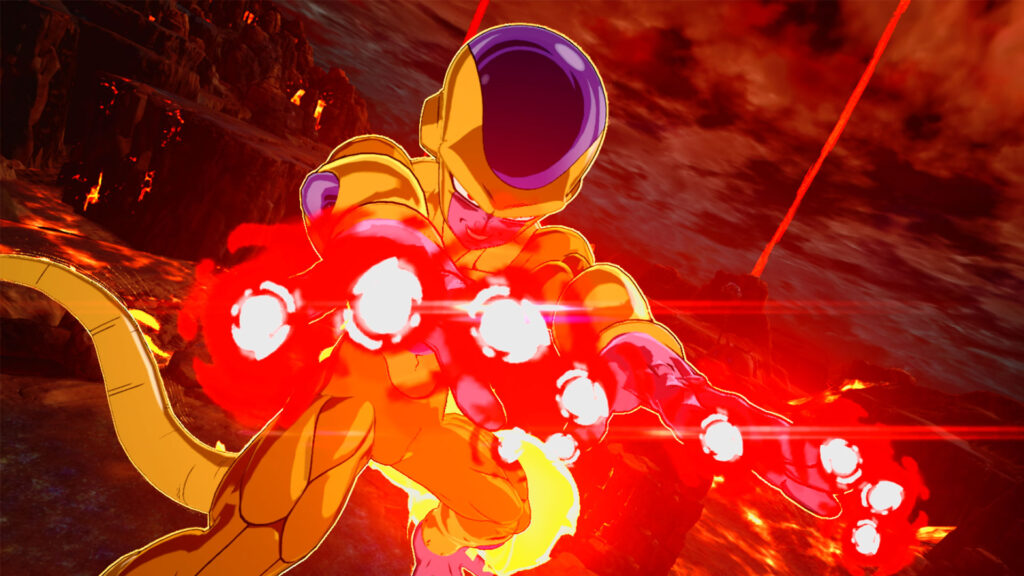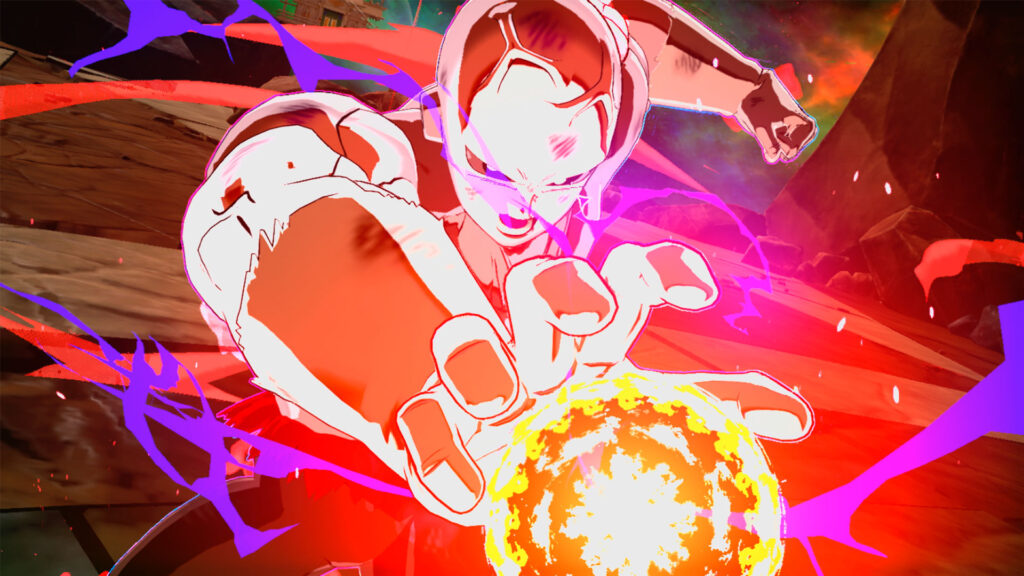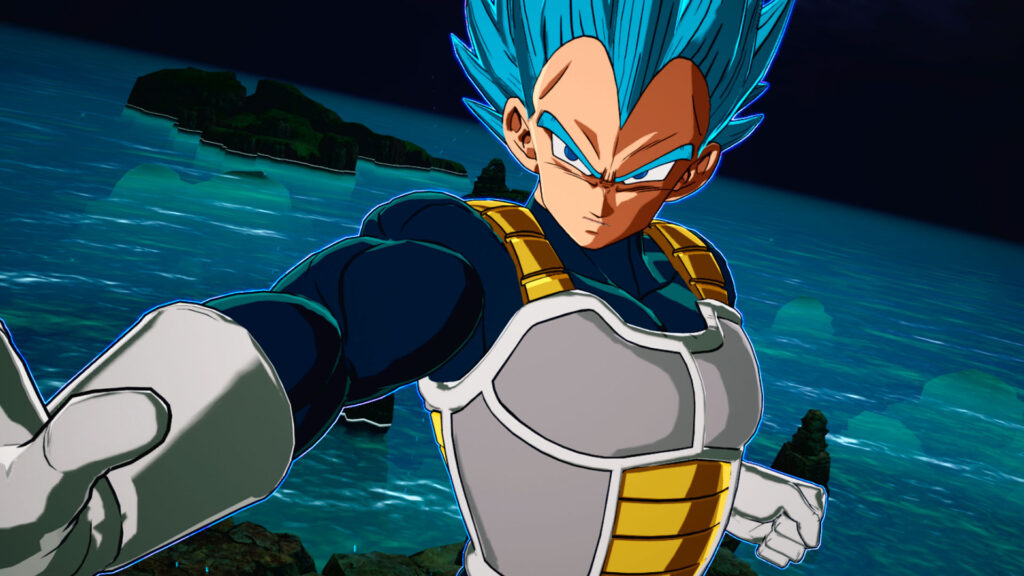There’s something magical about booting up a brand-new console and immediately tossing yourself into a world that’s all about speed, spectacle, and pure chaos. That was exactly my experience with Dragon Ball Sparking! ZERO on the Nintendo Switch 2. The moment the title screen faded in and Goku yelled his signature line, I knew this wasn’t just a simple handheld port. This was Bandai Namco saying, “Yeah, we’ve heard you, we want Dragon Ball to feel big, even on a portable machine.” Does it hit every mark? Not quite. Does it swing for the fences in true Dragon Ball fashion? Absolutely. Before we dive into the specifics of the Switch 2 version, let’s set the stage and get ready to rumble! Oh, and if you want the original review, you can check it out right here!
A quick look at Dragon Ball: What you need to know
If you’re new to the franchise, here’s the elevator pitch. Dragon Ball began as a manga by Akira Toriyama and quickly became one of the most iconic anime series ever created. The story follows Goku, a cheerful but ridiculously strong Saiyan warrior, as he protects Earth (and eventually entire universes) from villains who get more outrageous by the season. From martial arts tournaments to cosmic gods of destruction, the series is all about growth, transformation, and always pushing past limits. The Budokai Tenkaichi–style games, which Sparking! ZERO continues, bringing that exact energy into hyper-fast 3D arena combat: huge environments, high-speed movement, destructible terrain, and special attacks that look like a small sun exploding in your face. It’s Dragon Ball distilled into pure action.
Technical Performance: The Switch 2 Reality Check
Let’s get straight into the part everyone is curious about: How well does Sparking! ZERO actually runs on the Nintendo Switch 2? The answer: Better than you’d expect, but with the expected compromises. The game runs at a dynamic resolution that lands around 810p, scaling downwards when the action gets especially explosive. The Switch 2’s upgraded hardware keeps the visuals relatively clean, even in handheld mode. The real surprise is HDR support, which is not just a marketing bullet point. The light bloom, ki glows, and the warm flare of a Kamehameha beam genuinely pop off the screen. It goes a long way toward giving the handheld version a “premium” feel. However, there’s no avoiding the elephant in the room: The frame rate is locked at 30fps. Yes, it’s stable. Yes, it’s consistent. And yes, the gameplay remains perfectly enjoyable. But if you’ve seen the game running at 60fps on more powerful systems, you’ll immediately notice the loss of fluidity. It’s the classic Switch compromise, except now on a more powerful Switch 2, where some players hoped this era was over. It’s not something I stress over, but I know a lot of you care about these kinds of details. Especially since we’re dealing with an Unreal Engine 5 title filled with particle chaos and destructible landscapes, the result is pretty respectable. It may not be the definitive way to play, but it’s far from a throwaway port.
Visual Presentation: Stylish, explosive, and surprisingly clean
One thing you can never take away from Dragon Ball games is their ability to look spectacular. Even on less powerful hardware, the series always finds ways to make beams flash, explosions rumble, and transformations feel impactful. On Switch 2, that tradition continues. The destructible environments are fully intact, and craters form where bodies hit the ground (looking at you, Yamha), rocks shatter, and debris flies everywhere when you unleash a big special attack (Ka-me-ha-me-ha-got your nose). Character models look sharp thanks to the stylized shading, and HDR really elevates the colourful energy effects. The lighting during beam clashes is particularly impressive for handheld play, and on a big OLED television, it’s a true spectacle to watch (except for those sensitive to light). Still, compared to the PS5 or Series X versions my con-colleagues played, you will notice softer shadows, lower particle density, and occasional texture downgrades (especially the hair, for some reason). The sharp eye might even find a slightly blurrier image during high-action sequences, but since I’m basically the human equivalent of a mole, I don’t notice these things. And let’s be fair. None of this ruins the experience, but the difference is noticeable if you’ve seen the game elsewhere. For what it’s worth, I’d say this is among the most visually impressive arena fighters on any Nintendo console to date. Handheld Dragon Ball has never looked and played this good!
Sound & atmosphere: It’s loud, familiar, and full of energy
The Dragon Ball aesthetic isn’t only about visuals; it’s the sound that completes the package. From the screaming energy attacks to the exaggerated punch impacts to the voice actors putting every ounce of drama into their delivery, the audio is classic Dragon Ball, and noticeable for everyone (my wife hated the fact that I got to play this one). What helps on Switch 2 is the stable performance and HDR clarity, which make it easier to sync with the rhythm of the fights. When you hear an energy blast whistle past your head or sense the rising charge of a finishing move, it carries weight. The soundtrack follows the standard DBZ-like formula: adrenaline-pumping rock, heroic fanfare, and high-tempo beats whenever things get heated. It’s exactly what you expect, and want, from this series. Oh, and I highly recommend turning on the original Japanese voices for this title. It was so rewarding to hear them, instead of the brilliant English dub. Sorry, English-VA from Vegeta, I prefer the Japanese one now.
Gameplay: Fast, flashy, and true to its senzu beans
Let’s talk gameplay, because this is where Sparking! ZERO truly shines. Any fan of the old Budokai Tenkaichi games will feel instantly at home. This is the evolution of that formula, featuring 3D arena combat, speed, vertical movement, and flashy finishers. So what’s new in this title compared to the other Dragon Ball Brawlers?
High-speed movement feels satisfying
Flying, dashing, and teleporting maintain the sense of momentum that defines the Tenkaichi lineage.
Combat is layered but intuitive
You can mash for fun or dig into deeper mechanics like vanish counters, pursuit chains, and timing-based clashes. I highly recommend the battle training tutorials.
Team Battles add strategic depth
Tagging in characters mid-fight gives you room to experiment with combos, transformations, and synergy-based playstyles.
Ultimate attacks remain the showstoppers
These look glorious, even with scaled visuals, and they’re still the “put the controller down and watch” moments fans love. The only real drawback remains tied to that 30fps cap. If you’re used to perfect inputs and razor-sharp timings (like with Street Fighter), you’ll occasionally wish for faster responsiveness. Nothing game-breaking, but noticeable for the brawler enthusiasts out there.
Story Mode: Reliving the big moments
The story mode (or Episode Battles mode) remains a highlight. It retells major arcs from the Dragon Ball universe with dynamic cutscenes, branching paths, and moments you can influence through your performance. The Switch 2 version retains everything from other platforms, and the production value feels surprisingly intact. I loved the cinematic reenactments of iconic fights and the addition of “what if” paths. It gives the player a sense of creative freedom to stray from the beaten path. Oh, and let’s not forget the unique conditions and twists per mission, like beating the crap out of someone in a certain amount of time. Although it might not be a groundbreaking story mode, it’s very fulfilling, well-paced, and lovingly crafted. It gives those who want to brush up on Dragon Ball history a chance to relive some iconic moments.
Content & Modes: A full package!
Let’s talk modes. Sparking! ZERO gives you the usual buffet of Dragon Ball goodness:
Versus Mode (local & online)
Local multiplayer works well, though split-screen is limited to a specific training-style arena to keep performance stable. Online play is generally smooth and responsive, although split between S1 and S2 servers for some reason. I do hope they fix this in the near future.
Custom Battles
Create your own dream matches with complete control over rules, teams, power levels, and settings. Oh and even a title card in Dragon Ball style.
Training, tutorials, and challenge missions
Surprisingly thorough and an excellent start for newcomers. I highly recommend playing through these, since I learned quite a lot of useful input for the episode missions I had trouble with.
Massive roster
From early Dragon Ball favourites to Super-era juggernauts, the Switch 2 version includes the full launch roster and updates up to the cut-off point.
A few limitations are worth noting:
- Some post-launch content (DLC) available on other platforms hasn’t yet arrived on Switch hardware.
- Upgrading from the original Switch version can cause loss of replay data or custom fight templates.
- Content parity across platforms might stay behind a bit in the future.
These aren’t dealbreakers, but they’re worth knowing if you plan to go deep into the game for months to come.
Multiplayer: Fun but fragmented
Online multiplayer works smoothly, but there’s a catch I mentioned before.
Players on the original Switch version and those on Switch 2 can’t interact unless the older version has been upgraded. It’s not ideal, especially for families or friends who haven’t made the hardware jump. Still, once everyone is synced up, online fights hold steady, and the chaos translates well. Wireless local multiplayer is also great for casual play sessions, and the game supports multiple players in some modes.
Switch 2 upgrade path: Convenient, but imperfect (like Cell?)
If you owned the original Switch version, the Switch 2 upgrade is easy to download (and costs around €/$9.99). The game recognizes your account and gives you access to the enhanced visuals and performance profile. But, and it’s a big but, not all game data transfers over. Replays, specific custom battles, and some online records don’t migrate. If you had hours of saved custom setups, they may be gone. It’s a minor frustration, but notable nonetheless if you are keen on keeping them.
Conclusion
Dragon Ball Sparking! ZERO on Nintendo Switch 2 is exactly what I expected, and yet still managed to impress me in moments. It isn’t the most powerful version, nor the smoothest, nor the cleanest. But it is the most flexible. The fact that you can pick this up, take it anywhere, and still experience massive energy clashes and cinematic finishers is a big win. With this edition, we get a high-quality handheld Dragon Ball experience with real kaio-ken moments, held back only by some hardware limitations (or design choices?). If you’re a Dragon Ball fan who values portability, this is easily one of the best ways to play the game. If you want the absolute best visual and performance experience, the home consoles might still win in your book. So, without further ado, I’ll be teaching my kids how to do kamehameha’s with their hands.





